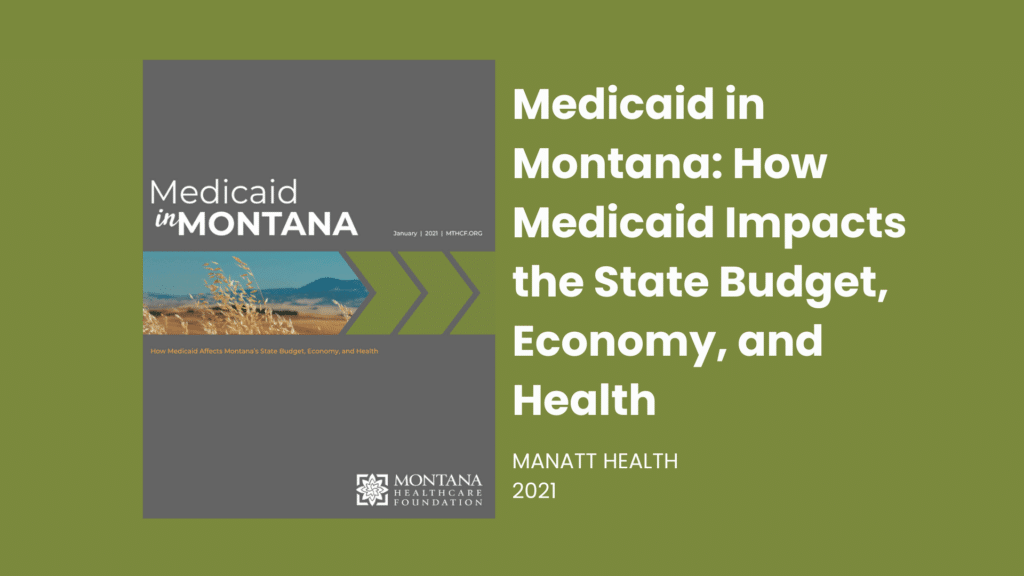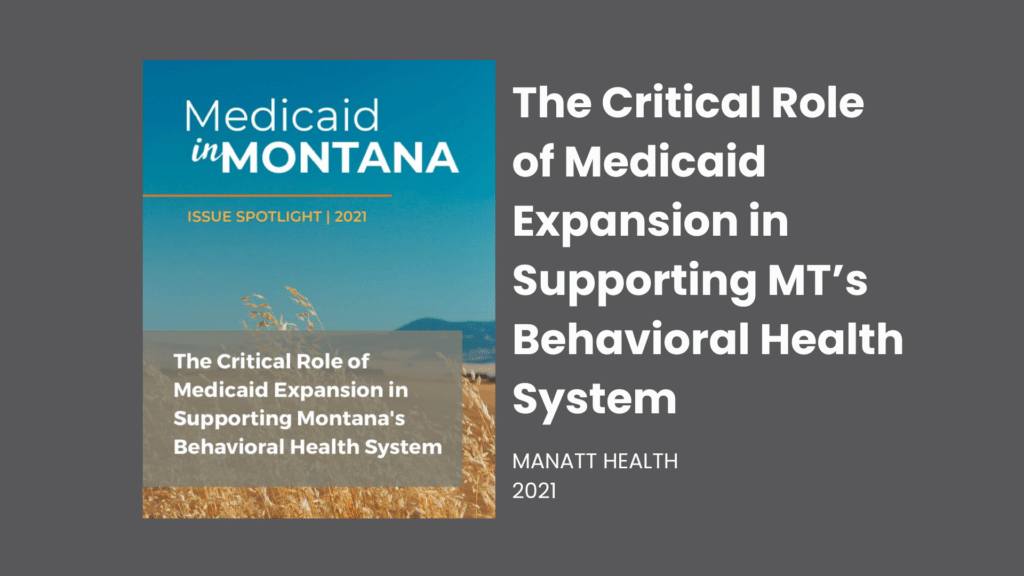A new analysis finds that ER use declines for Montana Medicaid expansion enrollees the longer they have access to primary and specialty care, dental, and behavioral health services
Emergency department visits decreased by 14% and more than 30% for people with preventable dental emergencies.
Bozeman, Mont. (April 12, 2022) – Today, the Montana Healthcare Foundation released an in-depth analysis of the Montana Medicaid program, its cost, and its impacts on health in the state. In the first research of its kind, the analysis shows that Montana’s Medicaid expansion led to lower use of high-cost emergency services and increased access to lower-cost primary care and outpatient specialty services. The report also shows that Montana spends a lower proportion of the state general fund to finance its Medicaid program than peer states.
In this second annual report on Medicaid, we provide data for the first time that shows the program’s impact on Montanan’s health. Medicaid expansion enrollees’ use of the emergency department declined each year they were enrolled. At the same time, people were able to access lower-cost outpatient care that helps prevent severe illness. These results offer a powerful validation of the Legislature’s core reasons for expanding Medicaid.
Dr. Aaron Wernham,
Montana Healthcare Foundation CEO
Montana’s Medicaid program provides low-income Montanans – from children to seniors to the disabled to the medically needy – access to health care services that support their health and well-being. The bipartisan Montana Health and Economic Livelihood Partnership (HELP) Act expanded Medicaid in 2016 to cover nondisabled, childless adults with incomes up to 133% of the federal poverty level, which was roughly $13,000 for an individual in 2021. Medicaid currently provides coverage for 278,000 Montanans (25%), 105,000 enrolled through Medicaid expansion.
Key findings include:
- Montana leverages a significantly lower proportion of its state general fund (12%) to finance its Medicaid program than peer states, including states that have not expanded Medicaid.
- Medicaid expansion enrollee use of the emergency department declined each year they were enrolled.
- The number of people visiting the emergency department decreased by 14% between the first and second years of enrollment.
- People with chronic physical and behavioral health conditions increasingly engaged specialists the longer they had coverage.
- Over three years of enrollment, the number of people visiting the emergency department for preventable dental conditions decreased by more than a third.
- The HELP Act and Medicaid expansion generated state budget savings of nearly $27 million in 2021 by providing higher match rates for some existing Medicaid populations and replacing existing state spending with new federal dollars.
- Medicaid-covered telehealth use rose significantly from 2019 through 2020, with behavioral health visits increasing by 2,817%, but began to decline again as more practices returned to seeing clients in person.
- Medicaid expansion is a critical source of health coverage for rural Montanans. In 2021, 64% of enrollees lived in rural areas.
- Montana Medicaid expansion provides access to preventive services and treatment to 16,000 Native Americans and expands health care access for Native people.
Medicaid provides Montanans with low-income access to physical and behavioral health care services based on their medical needs and life circumstances. It also provides access to primary care services, a crucial resource for early detection and treatment of behavioral health concerns. Montana expanded Medicaid in 2016, increasing access to behavioral health care services by providing coverage for over 90,000 people and providing funding that has allowed the behavioral health system to grow and add new services to the benefit of all Montanans.
Medicaid in Montana: How Medicaid Impacts Montana’s State Budget, Economy, and Health was produced by Manatt Health and commissioned by the Montana Healthcare Foundation.
 Melinda Buchheit, MS
Melinda Buchheit, MS
